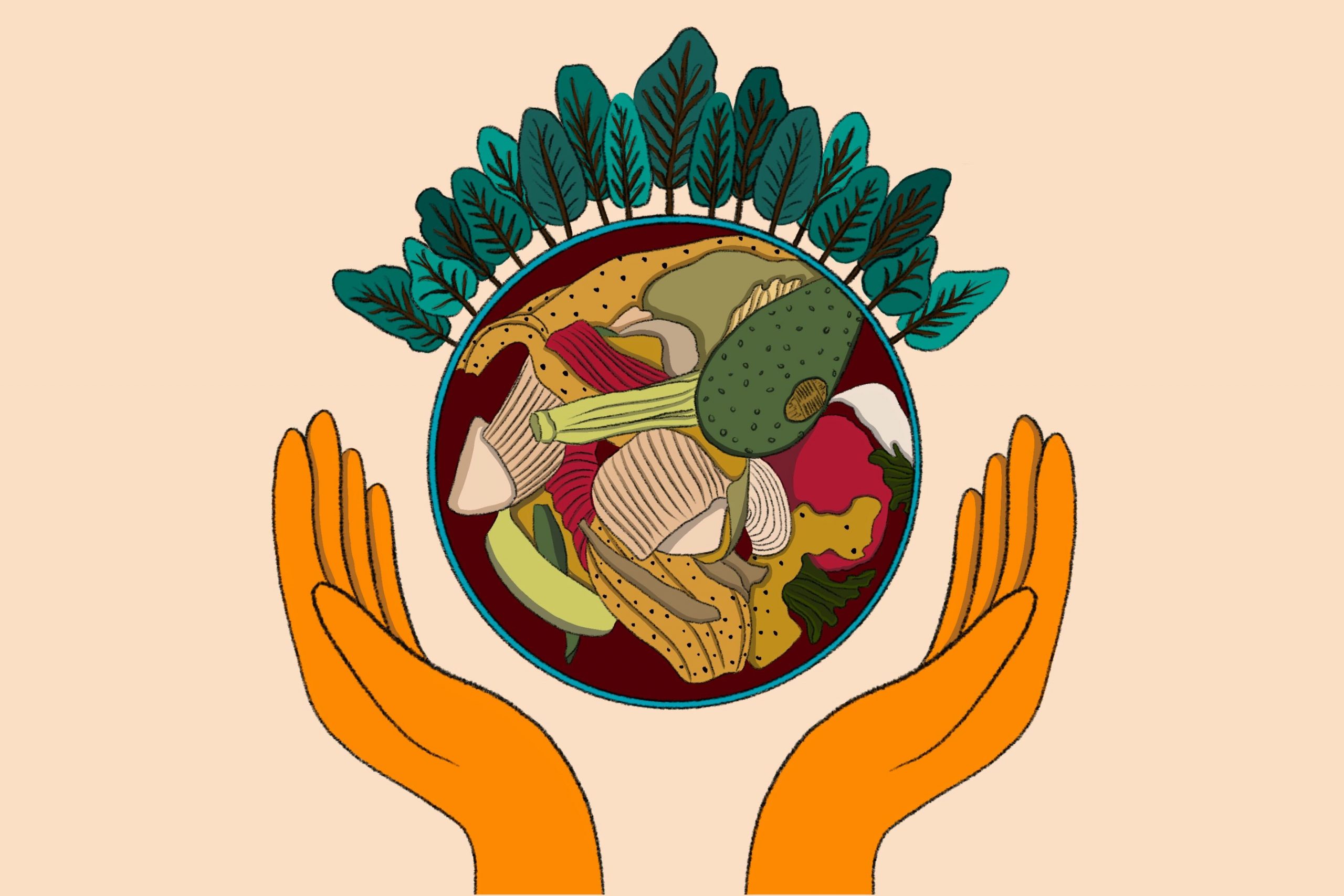While we all stay inside during the COVID-19 pandemic, we start to notice the unpleasantries of our living spaces. Garbage has to be one of the top annoyances. Whether it’s filled with failed attempts at making your own bread, spoiled leftovers from last week’s takeout or the usual weekly food dumps, it all seems to be piling up.
What can you do with all of this trash? Begin your latest quarantine project and start composting. Minimizing the amount of waste in your kitchen trashcan is only one perk of composting. It’s the gift that keeps on giving. What once was a space eater in a tiny waste basket can now be nutrient-rich compost. Your trashcan and the environment will reap the benefits.
Composting is a great alternative to throwing scraps in the dumpster every week, but it does seem daunting. Composting is a science, and some of us are as far away from a green thumb as you can get. However, composting is a project anyone can tackle.
How do you do it? It depends on where you live, but there is a method for everyone. If you own land, you have a variety of options of composting techniques. The easiest one is to bury it. Yes, you quite literally just bury your food. Take those old veggie scraps from a stir-fry, dig a hole about 12 inches deep, chuck them in, place the dirt back on top and forget about it. It really can be as simple as that.
But the dig-and-drop method doesn’t appeal to everyone. People may not have enough ground space to “plant” all of their food waste. Others worry about having that area designated to grow flowers and can’t wait for the composting to break down the material. Whatever the reason, there are other options.
Try a compost bin. The term “bin” should be taken very lightly, though. Composting bins can take whatever shape the imagination can dream up. The easy method is a big trash heap. Throw it all in a big pile and let nature do its work. A tarp can be thrown on top to help regulate the compost temperature, slightly deter animals and hide away the eyesore.
The two chuck-and-forget methods seemingly require no effort, but downsides do exist. Pests can get into the holes or piles, neighbors can complain about the unsightly views or potent smells and the compost will take quite a while to break down. If you’re willing to put in a tad more effort, actually creating a compost bin is a great choice.
The bin can be homemade or store-bought, crank-rotated or hand-stirred, large or small. Whatever bin your heart desires will then need four key ingredients to make compost: food, water, air and a good temperature.
What exactly is food? It is the material the worms and bacteria eat to produce the compost. It’s composed of a mix of green, nitrogen-heavy matter and brown, carbon-heavy matter. Basically, greens would be the food scraps from your kitchen — beginners should avoid meat, dairy and citrus — the grass clippings from when you mow the lawn, and similar fresh materials. Browns would be shredded paper, dead leaves, wood chips and the like. The ratio of greens to browns varies depending on the source, but a recurring recommendation is three parts brown to one part green. Layer the browns and greens, and then add some water.
Just like a plant, your compost pile needs to be watered. The lovely critters turning the food into compost need water to keep doing their job. However, it’s important not to overwater and drown them. The pile should feel slightly damp, similar to a wrung-out sponge. If the pile is too dry, pour some water on it. If your pile is too wet, the root cause of compost odor, add some more browns to your pile and let some air in.
The air is the more tasking part of the elements. If you opt for the rotating bin, just spin the bin every day or so to keep your compost “cooking.” If you have a stationary bin, either enclosed and with holes or just an open-air, give your pile a nice mix. You can use a pitchfork for larger and unenclosed compost bins. A small compost bin can be turned on its side and rolled around to create airflow. That’s as laborious as it gets.
The scientific aspect comes in with the temperature control. Composts create heat. The heart of your compost should be a toasty area where the worms are accelerating the material breakdown. The heat indicates that your waste is turning into compost. If the pile is cool, it needs some maintenance. If your compost has gone cold, there isn’t enough of one or more of the other three elements. Is it too wet or dry? Adjust hydration levels accordingly. Does it need more air (this is aerobic composting after all)? Turn it a few times. Does it look low on greens and browns? Your compost is almost done! It should be a dark brown, soft, crumbly substance that gives a nice earthy smell.
Apartment dwellers, dorm residents or those otherwise without feasible space still have the opportunity to compost. It’s called vermicomposting. Again, the customization is endless. The basics are a two-bin system. One bin is to house the worms and compost, and the second is to catch the liquid created during the composting process.
Worm composting has the standard composting components, plus the worms. The bin is lined with the browns (usually newspaper, especially in the city). The next layer is some food for the worms; it can be soil, premade compost, etc. You place the worms in this “bed” and let them adjust to their new home. After about a week of the worms growing accustomed to their new environment, you add in your greens. The aeration is taken care of with the holes in the bin and doesn’t require turning and mixing like the outdoor compost bins do. The temperature is also largely taken care of inside the home. The bin just needs to be in a location that’s between 55 and 75 degrees Fahrenheit. Then let the worms do their thing.
Troubleshooting indoor compost works similarly to that of the outdoor methods. If it starts to smell, add in some more browns to the mix. Make sure there is the right amount of food. You don’t want to overdo it, but putting a slight surplus of food into the vermicompost won’t matter too much because the worms will eventually adjust to your regular food volume. The happy worms will then produce nutrient-rich compost right inside your home.
Now what do you do with your compost? Adding it as a dressing or fertilizer to your garden is great if you have a garden. Potted plants will also enjoy the compost. If you don’t plant at all and don’t know anyone who does, try taking it to a school, community garden, local farm or farmer’s market. If somehow you’re still stuck with the compost after trying all of those options, sprinkle some around the ground at your favorite park to promote plant growth (legally of course).
That’s it. These are some composting basics for a fun quarantine project to save the environment and kitchen space. For more serious composting, you’ll need some experimentation. Composting the easy way doesn’t factor in how to get the perfect nutrient combinations. It will take months or even a year to make. It may be eaten by animals, contaminated with weed germs, etc. (See tips for how to avoid these beginner mishaps.) But basic composting is the perfect method for simple food-waste reduction.
Still too scared to try your hand at composting but have the time during this quarantine? Spend some time researching community composting in your area. You may find a local service and avoid the “hassle” of personal composting. If you don’t have any local service, petition your local government to incorporate composting into your community. However you choose to do it, make the most out of staying home by turning your waste into something amazing.
















